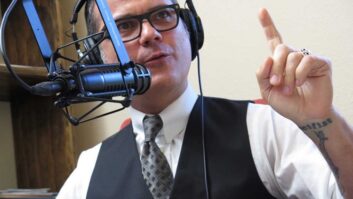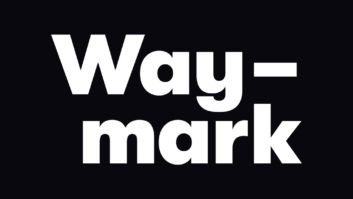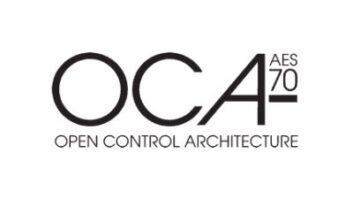IBOC Update – Mar 24, 2004
Mar 24, 2004 12:00 PM, compiled by Mark Krieger, CBT
Index:
- Ibiquity Strengthens HD Radio CommercializationTeam
- Broadcast Electronics Partners With E-radio
- NPR Submits Tomorrow Radio Report to FCC
- FCC Authorizes Use of Dual Antenna Digital HybridOperation
- Ibiquity Files Report on AM IBOC NighttimeOperation with FCC
- We Want to Hear from You
- An Introduction to the New Language Surrounding HDRadio
- Details of IBOC Power Measurement Featured in NABSession
- Nautel To Unveil AM and FM IBOC Products atNAB2004
To receive these articles twice a month in your e-mail, subscribe tothe IBOC Update – Insight on HD Radio e-newsletter. Click here to subscribe.
News
Ibiquity Strengthens HD RadioCommercialization Team
Columbia, MD – Ibiquity Digital Corporation has added two newmembers to its commercialization team to assist in the expanded rolloutof AM/FM digital radio. Peter Brady, former director of sales for SonyElectronics, joins Ibiquity as director of aftermarket businessdevelopment, and Bob Dillon, former CEO of Enikia, assumes the role ofdirector of IC strategic marketing.
As director of aftermarket business development, Brady will work withreceiver manufacturers to bring additional HD Radio products to marketand with retailers to increase the outlets for those products. Bradywill draw on his 18 years of experience with Sony Electronics, where heworked with retailers in launching a variety of the company’s consumerelectronics products.
As director of IC strategic marketing, Dillon will be in charge ofdeveloping and strengthening Ibiquity’s ties with semiconductorsuppliers to help increase the availability of HD Radio chip sets.Dillon has ten years of experience working in the semiconductor andnetworking industries in both business and engineering roles, includingformer positions as CEO of Enikia Incorporated, a privately helddeveloper of power-line networking silicon, and vice president of AwareIncorporated, a leading developer of xDSL technology.
Business
Broadcast Electronics Partners WithE-radio
Quincy, IL and Toronto, ON – Broadcast Electronics and E-radio haveannounced a partnership in support of RBDS (radio broadcast datasystems) and HD Radio data applications. This joint effort takesadvantage of Broadcast Electronics’ experience in RF and contentmanagement along with E-radio’s expertise in text service and mediadelivery applications.
By combining efforts with E-radio, Broadcast Electronics will offer acomplete datacasting system for current RBDS implementations and thedeveloping market for HD Radio applications. An immediate result ofthis collaboration is Broadcast Electronics’ Radio Data Dimensions, anew data management software suite to be unveiled at NAB 2004.
In addition to the software’s ability to manage RBDS eight-characteridentifiers and 64-character text for the display of title/artists,promotional messages, advertiser IDs, traffic bulletins, and AMBERalerts, the suite includes support for HD Radio’s secondary programchannel services such as NPR’s Tomorrow Radio. Radio Data Dimensionsalso provides bandwidth provisioning for navigational system datadownloads to tuners. All functions and user controls for the softwaresuite are accessible from a Web-browser content management tool.
FCC Update
NPR Submits Tomorrow Radio Report toFCC
In a March 10 letter filed with the FCC, National Public Radio (NPR)formally announced its submission of an engineering report purported toclearly demonstrate the practical feasibility of transmitting asupplemental audio channel (SAC) on IBOC-equipped FM stations. Theletter followed a series of meetings between NPR’s Mike Starling, VP ofengineering and operations, and Mike Risken, NPR VP of governmentrelations, with legal representatives for FCC Commissioners Copps andAdelstein and FCC Chairman Powell. On March 11, a day after the filingof the report, NPR’s Starling and Risken, along with representativesfrom consulting engineers Hamett and Edison and Kenwood America’s MikeBergmen met with FCC Media Bureau staff to explain the data and answerquestions.
In a nutshell, NPR takes the position that the processof splitting a 96kb/s FM IBOC digital signal into a 64kb/s main audioprogram (MAP) channel and a 32kb/s SAC channel has been technicallyvalidated and is a viable mode for FM IBOC broadcasting using theIbiquity system. Based on favorable field tests conducted with four ofNPR’s major-market affiliate stations and documented by Hamett andEdison, NPR “respectfully requests the Commission to authorize FMstations to implement the SAC capability of HD Radio, either in thecontext of a further notice of proposed rulemaking or based onconsideration of SAC alone, but, in any event, as soon as possible andwithout requiring new station licensing.”
In its letter, NPR stressed that public radio’s transition to digitalservice will not only be driven by a quest for improved audio qualityand reduced interference, but by “the expanded public service andprogramming opportunities demonstrated and proven by the Tomorrow Radioproject.” While the concept of an FM licensee offering multiple programstreams poses no obvious regulatory hurdles, given the precedent of FMstations carrying alternate programming on analog SCA channels, itappears that the FCC will continue to require stations operating inIBOC hybrid analog/digital mode to maintain common program material ontheir analog and MAP channels for the foreseeable future. Industryobservers note that commercial stations interested in carrying SACchannels may also face additional licensing fees from Ibiquity relativeto the amount of revenue such additional programming generates.
More information about the Tomorrow Radio project is available in theMarch 2004 issue of Radio magazine, or online at beradio.com/ar/radio_tomorrow_radio_world/.
FCC Authorizes Use of Dual AntennaDigital Hybrid Operation
Washington, DC – In Public Notice DA 04-712 issued on March 17,2004, the FCC declared that it will permit FM stations operating in FMIBOC hybrid modes to use separate antennas for the transmission ofanalog and digital carriers, but only if it authorizes such operationthrough the issuance of a routine Special Temporary Authorization(STA). The statement was issued in response to a report submitted tothe FCC on July 24, 2003, by the National Association of Broadcasters(NAB) regarding the use of separate antennas for the analog and digitalcomponents of the hybrid FM IBOC signal. That report included fieldtest data prepared by an ad hoc technical group, and recommended thatthe Commission permit FM stations implementing IBOC transmissions touse separate antennas for analog and digital signals, provided thatcertain technical criteria are met by the licensees.
After issuance of a Public Notice on Dec. 8, 2003, the Commissionsought comment on the conclusions and recommendations made by the NABreport. Several commenters suggested broadening the NAB recommendationsto include dual-antenna systems at variance with the NABrecommendations, while a number of other commenters supported the NABrecommendations as submitted.
After a review of the NAB report and all subsequent comments, theCommission concluded that to simply allow separate antenna operationunder the current interim IBOC FM authorization procedures would exceedthe intended scope of the procedures laid out in the current IBOCorder. Under those regulations, stations may operate IBOC facilitiessimilar to those evaluated by the National Radio Systems Committee, butonly after notifying the FCC of their intent.
Recognizing that further rulemaking will be required regarding thelong-term operation of IBOC AM and FM service, the FCC deferred finalconsideration of the issue to a future notice of proposed rulemaking(NPRM). However the FCC did specify that stations interested in dualantennae operation may request a routine STA, providing that the second(digital) antenna meets the following requirements, recommended in theNAB report:
- The digital transmission must use a licensed auxiliary antenna.
- The auxiliary antenna must be within three seconds of latitude andlongitude of the main antenna.
- The height above average terrain of the auxiliary antennas must bebetween 70 and 100 percent of the height above average terrain of themain antenna.
The FCC also stipulated that digital and analog signals fed to the sameset of active, radiating elements, constitute a combined system,and that licensees may obtain authority to operate this kind of systemin accordance with the existing notification procedures set forth inthe IBOC Order. Where different sets of active, radiating elements areused for the analog and digital signals, the system will be consideredas a separate-antenna system, and subject to the STA proceduresannounced in the FCC’s Public Notice DA 04-712.
Typically, a request for STA must be filed at least 10 days beforecommencing proposed operation, and an STA is only valid for a period of180 days – though multiple extensions may be granted. Presumably, theCommission will address the issue in an NPRM before such renewals wouldbe exhausted.
Questions regarding Public Notice DA 04-712 can be directed to Ed De LaHunt, Charles N. Miller, or Ann Gallagher at the FCC Media Bureau,(202) 418-2700.
Ibiquity Files Report on AM IBOCNighttime Operation with FCC
In support of an NAB recommendation that the FCC permit operation ofAM HD Radio digital transmissions during nighttime hours, Ibiquityfiled a three-part technical report with the FCC on March 5. Thereport, consisting of a AM nighttime compatibility study and two fieldreports on AM IBOC nighttime performance measurements, were submittedfor FCC review in hopes of obtaining a decision by the FCC to allowinterim nighttime operation of AM stations transmitting an HD Radiosignal. Currently, such stations are only authorized to conduct digitaltransmission during daylight operating periods.
While the NAB Radio Board voted on January 20 to openly support interimAM IBOC night operation, it did so with the reasoning that the IBOCAM’s relative advantages were so great as to outweigh its negativeimpact on secondary AM coverage. The NAB repeated this position in aletter filed with the FCC on the same day Ibiquity filed their report,stating in part that “the dramatically improved audio quality from IBOCservice at is well worth the predicted and limited reductions in analogcoverage�in the event that there are reductions in stations’primary nighttime analog service areas beyond those predicted by thestudies, the FCC should take steps to address those problems.”
Opponents to AM IBOC night operation have filed comments that point toreduced AM coverage as “unacceptable” and have proposed that analogCQUAM stereo instead be mandated as the default night time operatingmode for IBOC AM stations.
Eye on IBOC
We Want to Hear from You
We will continue to cover the news and technology of IBOC and HDRadio as it develops. We want to hear your stories as well. Tell usabout your experience in installing IBOC equipment and your research ofthe technology to implement it at your station. If you have signed anIBOC transmitter on the air, tell us.
Send your comments and ideas to [email protected].
HD RadioTerminology
An Introduction to the New Language Surrounding HDRadio
main program service (MPS)
: The main program service allows the transmission of existinganalog radio-programming in both analog and digital formats. MPSincludes the main program service audio (MPA) and the main programservice data (MPS Data).
main program audio (MPA): Part of the MPS, the main programaudio is the primary audio portion of the IBOC signal.
main program service data (MPS Data): The MPS Data providesadditional information about the audio, which also referred to asprogram-associated data (PAD).
Technology/Applications
Details of IBOC Power MeasurementFeatured in NAB Session
David Maxson of Broadcast Signal Lab is scheduled to present IBOCRF Measurements, a paper explaining the complexities of digital RFpower measurement at the upcoming NAB2004 Broadcast EngineeringConference. In his presentation Maxson will detail some of thechallenges broadcasters face when making RF measurements of IBOC radiosignals.
The issues, according to Maxson, stem from the complex nature of thedigital carriers generated by IBOC and other digital transmissionschemes. Techniques traditionally used to measure FM analog broadcastcarrier power, such as transmission line reflectometers or observationof a transmitter’s final amplifier DC input power, are unsuitable formeasuring the dynamic, wideband emissions of digital carriers. Thesituation becomes more complex when considering that broadcasterstransmitting hybrid digital signals, such as HD Radio, mustcontinuously maintain a fixed ratio between the power of digital andanalog carriers. Still another concern is the need to monitor andcorrect out-of-band emissions (so called “spectral regrowth”) that mayresult from intermodulation of carriers brought on by nonlinearcharacteristics in a given transmission system. The author concludesthat a new approach to signal monitoring and measurement is needed forbroadcasters intent on transmitting high quality IBOC digital radiosignals.
Maxson’s presentation will offer a number of insights gleaned fromactual spectral analysis of an operating hybrid IBOC FM station inBoston. This paper will be presented as part of the Radio RF andTransmission Developments session at the BEC on Tuesday, April 20,2004 at 9:30 a.m. in room N110 of the LVCC.
Products
Nautel To Unveil AM and FM IBOCProducts at NAB2004
Nautel will introduce three additions to its digital transmissionlineup at NAB2004. The new AM and FM offerings are specificallydesigned for HD Radio transmission and feature plug and playcompatibility with Nautel’s existing NE IBOC digital generator.
The J1000 is a 19″ rack-mount 1kW AM transmitter that uses directdigital synthesis (DDS) technology to produce logic level RF drive andmodulation encoding. Extended band performance supports both HD Radioand DRM digital transmission formats, while control and monitoring areprovided via 240 x 64 graphic LCD display. A redundant modular designutilizes two independent 500W wideband power modules, each encompassingRF amplifier, modulator, and power supply functions. The J1000 alsoprovides six preset RF power levels with programmable timed automaticpower level selection for up to 12 months.
On the FM side, Nautel will debut its M50 direct-to-digital exciter forFM and HD Radio. The wideband M50 uses digital signal processing andfield-programmable gate array technology, enabling direct conversion ofsource audio to low-level FM signal. Digital processing compensates fornon-linearities that may be introduced in the transmission system whileadaptive pre-distortion and pre-equalization ensures the hybrid HDRadio signal is compliant with spectral limitations.
The V10 10kW FM IBOC transmitter provides a platform for broadcastersinterested in the space-saving convenience of low-level digital/analogcombining. Featuring a linear, broadband design, the V10 is capable ofup to 3.2kW digital, 7.7kW hybrid or 11kW analog operation with notuning required for frequency agility. RF and power supply modules arehot-swappable, and the transmitter accommodates redundant exciters,IPAs, IPA power supplies, and low-voltage power supplies. Both the M50and V10 provide graphical user interfaces along with flow diagrams andevent logging.












